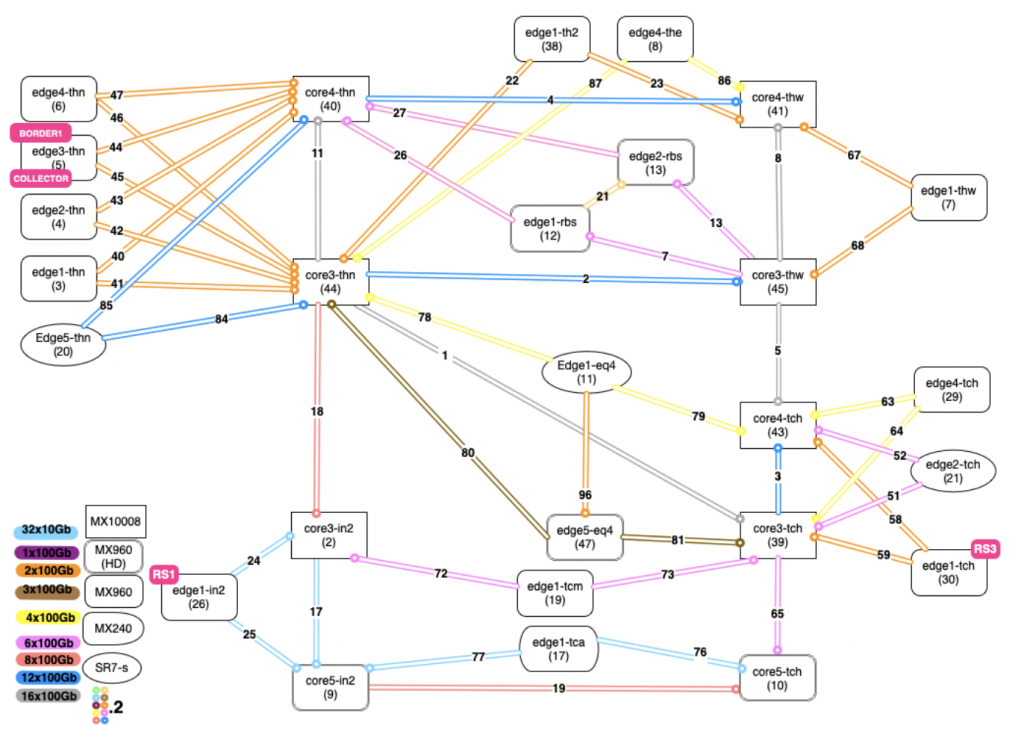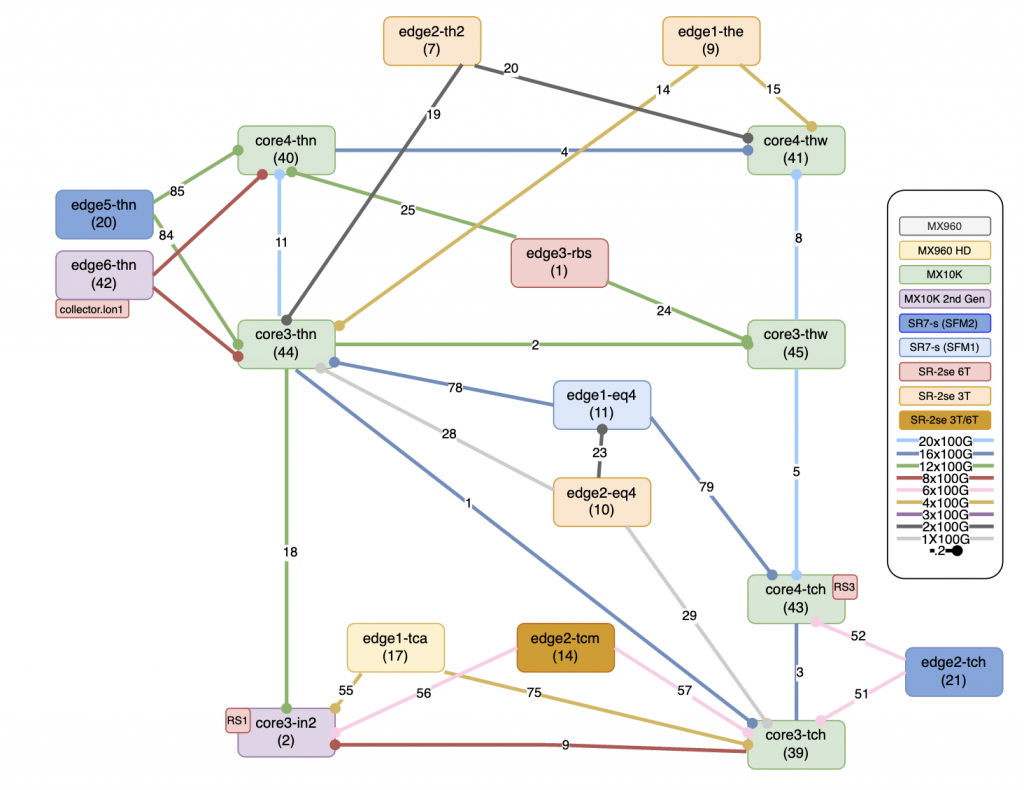Written by Mark Lloyd, Principal Network Engineer at LINX.
Over the past few months the LINX engineering team have been migrating our largest Internet Exchange fabric, LON1 in London from the MX960 platform, continuing to make use of the multi-vendor Juniper and Nokia MPLS EVPN solution.
Before
Juniper MX10008s and Nokia SR7’s utilised at core sites to deliver 100G and 400G members connectivity, but there were also 17 MX960s used in an edge role, to deliver 1G/10G at core sites and 100G at smaller sites.
Many of the cards used on the MX960s were approaching end of life and the low port density 2*100G port MPC4’s and 4*100G MPC7 cards were no longer viable at most sites for delivery of 100G member connectivity.

A cost effective, high port density solution was required
At Telehouse North, 1G and 10G members on the 4 MX960 edges were consolidated onto an MX10008 using 48*10G port LC480 cards.
1G and 10G members in Telehouse West and Equinix LD8 1G were migrated to LC480 cards on existing MX10008 chassis.
36 port 6.0T 800G capable Nokia FP5 cards were utilised on existing SR-7s. LC9600 cards were also deployed in some Juniper MX10008s; another 400G capable card with 9.6T maximum capacity.
Both the Nokia FP5 and FP4 cards as well at the LC9600 cards will be used in for a future project as we look to increase core inter switch capacity utilising multiple links of 400G.
At smaller sites, Nokia SR2-se chassis have been deployed using a combination of 36 port 3.0T FP5 cards and the previously mentioned 6.0T card. This enables us to significantly reduce footprint and power consumption with the ability to deliver up to 12.0T in a 5U chassis.

Total number of devices in the LON1 network have been decreased from 27 to 17 due to the higher port density of the new solution.
***
The LON1 network organically shifted to a multi-vendor set up with the introduction of our 400G offering with Nokia back in 2021.
A multi-vendor approach to network design is often considered a hybrid approach and offers increased flexibility, resilience and redundancy for us and our 950+ members.
Take a look at the LINX global network here
< Go Back